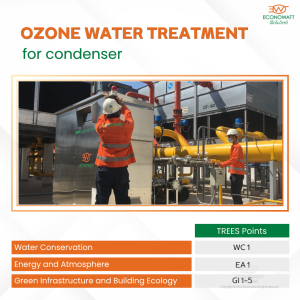What is TREES?
TREES (Thai’s Rating of Energy and Environmental Sustainability) is Thailand’s green building rating system, developed by the Thai Green Building Institute (TGBI). It serves as a guideline for the sustainable design, construction, and management of buildings, encompassing aspects of energy efficiency, environmental impact, and occupant well-being.
Main Objectives of TREES:
• Reduce environmental impact caused by resource usage in the real estate sector
• Promote energy conservation and the use of renewable energy
• Enhance the quality of life within buildings through natural lighting, ventilation, and indoor air quality
• Provide a standardized framework for sustainable real estate development in Thailand
TREES Evaluation Categories (9 Core Areas):
1. Building Management
2. Site and Landscape
3. Energy and Atmosphere
4. Materials and Resources
5. Water Conservation
6. Indoor Environmental Quality
7. Environmental Protection
8. Waste Management
9. Awareness and Education
Who is it for?
- Office buildings, factories, hospitals, educational institutions, etc.
- Real estate developers and system designers aiming for sustainability
- Organizations are aiming to advance their ESG (Environmental, Social, and Governance) commitments and elevate their Corporate Social Responsibility (CSR) reputation.

How to Use “Ozone for Condenser” to Earn TREES Points
Increase the TREES score with the Ozone for Condenser system Using ozone technology in chilled water systems is a cost-effective, sustainable, and point-generating solution. It addresses water, energy, and system durability simultaneously, making it a clear fit for the TREES criteria. It’s especially suited for buildings aiming for environmental performance and sustainable design.
In-Depth: TREES Credits Directly Supported by This System
Installing an ozone system for condensers or using ozone to treat cooling tower water is a technology that enhances the efficiency of cooling systems, reduces water and energy consumption, and keeps systems clean without relying on chemicals. This has a direct impact on achieving TREES-NC certification in Thailand, particularly in the following areas:
🔹 Water Conservation (WC)
WC1: Water Use Reduction
Ozone systems significantly reduce new water consumption (make-up water) through:
• Reduced blowdown frequency: Ozone extends the usable life of water in the system, reducing the need for frequent discharges and water replacements.
• Control of scale and bacterial growth: Prevents issues that normally require frequent flushing and water replacement.
Result: Buildings can demonstrate a reduction of 30–50% in total water use compared to the baseline, qualifying for WC1 points (1–5 points, depending on the percentage of reduction).
🔹 Energy and Atmosphere (EA)
EA1: Minimum Energy Performance & EA Credit: Enhanced Energy Performance
Ozone systems keep cooling towers and condensers operating efficiently by:
• Preventing scale and microbial buildup, which hinders heat exchange.
• Reducing the energy consumption of chillers and compressors over time.
Result: Helps buildings meet EA1 prerequisites and allows them to pursue Enhanced Energy Performance credits (1–7 points, depending on the energy savings achieved).
🔹 Green Infrastructure and Building Ecology (GI)
GI1–GI5 (e.g., GI4: Building System Durability)
From a system maintenance and longevity perspective:
• Ozone extends the lifespan of chilled water equipment such as pumps, pipes, and cooling towers.
• Reduces damage from harsh chemical treatments.
• Cuts maintenance costs and hazardous waste disposal needs.
Result: Supports points under GI1–GI5, particularly GI4, which emphasizes the durability of building systems and long-term sustainability in operations.

